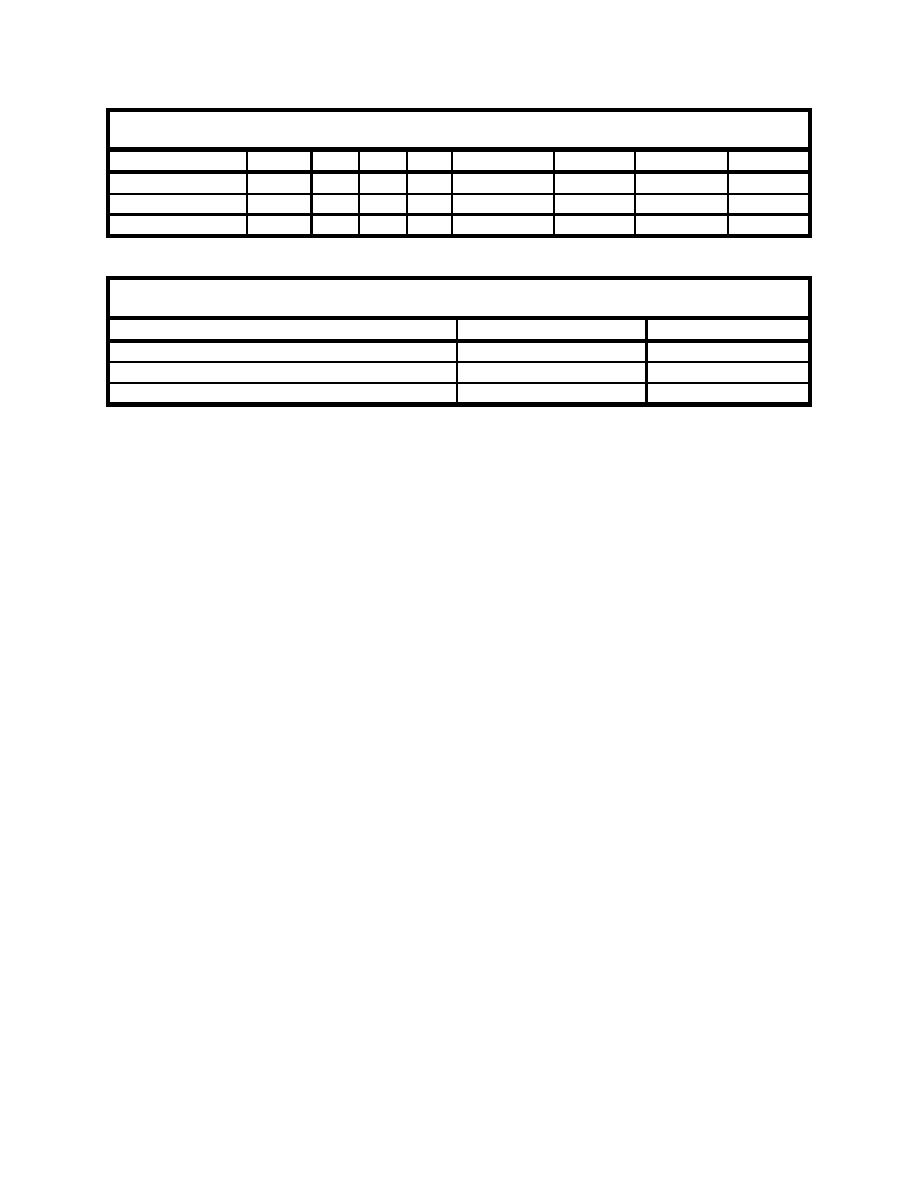 |
||
|
|
||
|
Page Title:
Table 7. Physical Properties of Sediment Grab Samples |
||
| |||||||||||||||
|
|
 ERDC TN-DOER-D2
September 2004
Table 7
Physical Properties of Sediment Grab Samples
Sample
Gs
LL
PL
PI
% sand
% silt
% clay
Class
LA Riv
2.66
-
-
-
90
10
0
SP
Fill
2.67
-
-
-
54
27
19
SM
Foundation
2.75
71
36
35
2
48
50
MH
Table 8
Median and Mean Grain Size (by weight) for Sediment Grab Samples
Sample
Median, mm
Mean, mm
LA River material
0.42
0.79
Dredged fill material in pit
0.09
0.18
Foundation material
0.005
0.018
The original sediment appears to have been transformed from a poorly graded sand into a silty
sand material by the time it was deposited into the subaqueous pit and subsequently sampled.
Several reasons may account for this change. Spatial particle size distribution variability in the
pit may have occurred as the coarser-grained material filled the pit bottom prior to the finer-
grained material (winnowing), sampled materials may have a high degree of grain-size heteroge-
neity, or sediment mixing with the soft fine-grained foundation material may have occurred. The
most likely scenario was sediment mixing and displacement of the very soft foundation material.
Modeling the foundation material's stressdisplacement as a function of cap stress (overburden
weight) demonstrated upward and outward displacements of the soft foundation material at the
sideslope interfaces with the dredged fill material (Lee 2001).
Regardless of the reasons for material property changes due to dredging operations, the lessons
illustrated here are that those changes do occur and must be accounted for in proportion to the
importance of quantifying subsequent engineering behavior changes. It may not be important to
know that dredged fill grain size distributions may change unless quantifying the subsequent
engineering behavior in that fill is important. As an example, porosity is only one of the many
material properties influenced by grain size distribution variability. Changes in porosity may not
need to be known for routine maintenance dredging, but computer models for water quality and
environmental fate depend on accurate porosity values.
VARIABILITY DUE TO DEFINITIONS: In addition to the changes in geotechnical properties
and engineering behavior in dredged materials, there are uncertainties in assigning property
parameters based on possible alternate definitions of those parameters. For example, the physical
property of water content may be defined in two or three different ways, depending on the test or
reporting method.
The standard method for water content (ASTM 1998) calculates the weight of water divided by
the weight of dry solids. Alternate but commonly used methods calculate the weight of water
divided by the total wet weight, or by a volumetric basis. Figure 15 compares three definitions of
water content referenced to the geotechnical standard (ASTM method):
13
|
|
Privacy Statement - Press Release - Copyright Information. - Contact Us - Support Integrated Publishing |